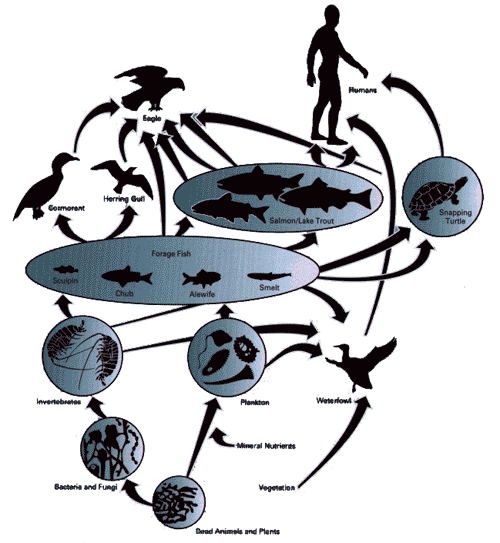In our Solar System, Earth is the only celestial body known to harbor life. Whether in the icy expanses of Antarctica or in the scorching heat of the tropics, from arid deserts to vast oceans, traces of life can be found everywhere. The environment that supports and is inhabited by all animals, plants, and microorganisms is referred to as the biosphere.
 |
|
The ecological relationships among species in the biosphere (Image: uwsp.edu) |
Plants are a crucial component of the biosphere. Many scientists believe that when Earth was first formed, the atmosphere was primarily composed of carbon dioxide (CO2), with very little oxygen. It was only with the emergence of plants, through the process of photosynthesis, that oxygen began to be produced, enabling intelligent humans and large animals to thrive. It is estimated that there are over 500,000 plant species on Earth. Plants that grow together are referred to as vegetation, such as forest canopies, grasslands, and deserts.
Animals in the biosphere are widely distributed. It is estimated that there are about 1.5 million animal species on Earth. Animals are categorized based on their ecological characteristics and the different natural environments they inhabit, including forest animals, grassland animals, desert animals, resource animals, and mountain animals.
Life forms on Earth exhibit strong adaptability, especially microorganisms, which adapt robustly and reproduce quickly. Geological surveys have shown that bacteria exist even hundreds of meters, or up to a kilometer, beneath the Earth’s surface. Some fish and lower-level plankton can survive in ocean depths of over ten kilometers. The process of life is characterized by the constant transformation of solar energy into chemical energy. Coal and oil are the remnants of ancient life forms that have undergone accumulation and transformation. Weathering of rocks and soil formation are inseparable from the active participation of living organisms.
The biosphere of Earth has developed over billions of years to create the living environment we see today. Throughout this long evolutionary process, the atmosphere, hydrosphere, and Earth’s crust have all played vital roles. Therefore, the formation of the biosphere is the result of the interaction, interpenetration, and mutual influence between the atmosphere, hydrosphere, and Earth’s crust.

















































